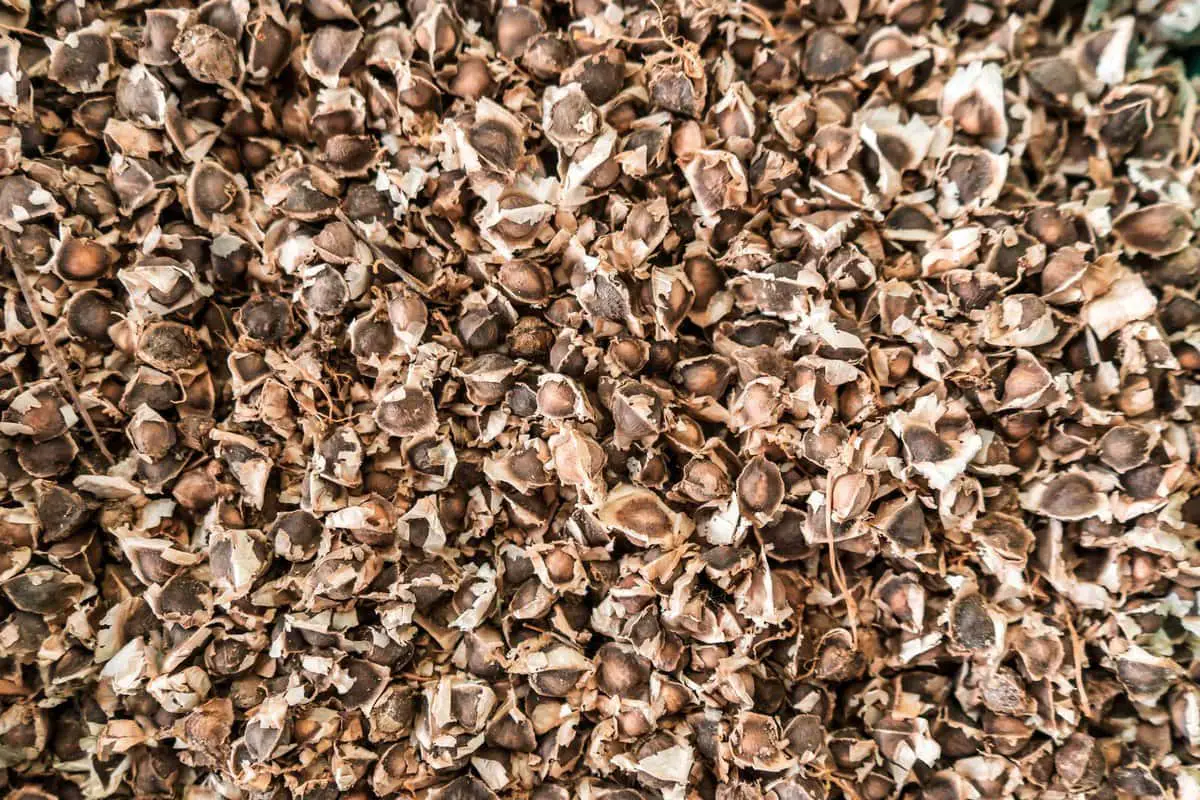With the number of emails we receive, it seems like everyone is growing a Moringa Tree! One of the most common questions we receive is about the when to plant Moringa seeds (and how).
The best time to plant Moringa seeds is dependent on where you live. In tropical regions, Moringa can be grown year-round, as it thrives in hot dry temperatures. If you experience some colder temperatures, the best time to plant your Moringa seeds is late summer or early spring.
The Moringa tree is a tropical plant, and that means that it loves warm weather, and they grow well in well-drained light and sandy soil or loamy soil.
Here’s everything you should know about taking care of Moringa plants and growing a healthy Moringa tree.
How To Plant Moringa Seed Pods Directly
To grow a Moringa tree with the healthiest sapling, seed pods should be planted directly in sun light and loose soil in early spring. Soak the seed pods in water for 24 hours, remove the external white covering, and plant at 1-inch deep. Keep the soil moist, and you should have germination within 15 days.
Moringa is easier to grow when you plant the seeds directly, as this method helps to protect young saplings when they can’t survive transplanting.
However, the success of this method depends a lot on your choice of seeds and soil. Remember, dwarf Moringa seeds are harder to grow than the regular Moringa tree, so you may see more success if you start with the latter.
If you want to learn more about dwarf Moringa trees and how to grow them, check out the article below:
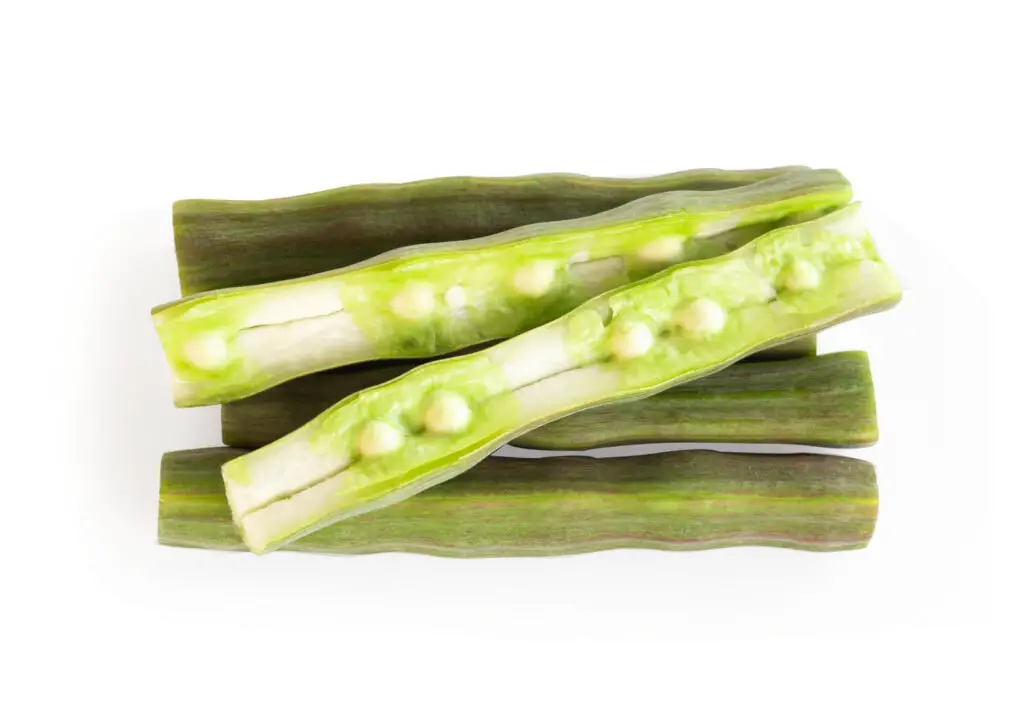
Should You Use Free-Draining or Well-Drained Soil For a Moringa Tree?
Well-Drained soil is a great choice for the Moringa Tree. Well-Drained soils are best used with plants that do not like moist conditions, like the Moringa tree. This is important as it ensures no seed or root rot.
While soil matters for your Moringa tree, it’s more important to get the temperature and sunlight correct. The perfect temperature to help the Moringa Tree seeds thrive ranges from 20 to 30 degrees Celsius (68 to 86 degrees Fahrenheit), but they can germinate anytime (even in winter).
You can also use pots if you’re confident in your abilities to transfer the young sapling safely later down the road.
If you use pots or plastic bags with paper towels, you have to make sure that they’re receiving enough sunlight after they’ve germinated. In areas with low temperatures or low humidity, maintain high humidity by sealing the pot in an airtight container or polythene bag.
Keep Watering daily until your young drumstick plant begins to emerge. Once your little planted Moringa plant seedlings are about 1 foot tall, transfer them to your garden.
Make sure you keep the roots intact!
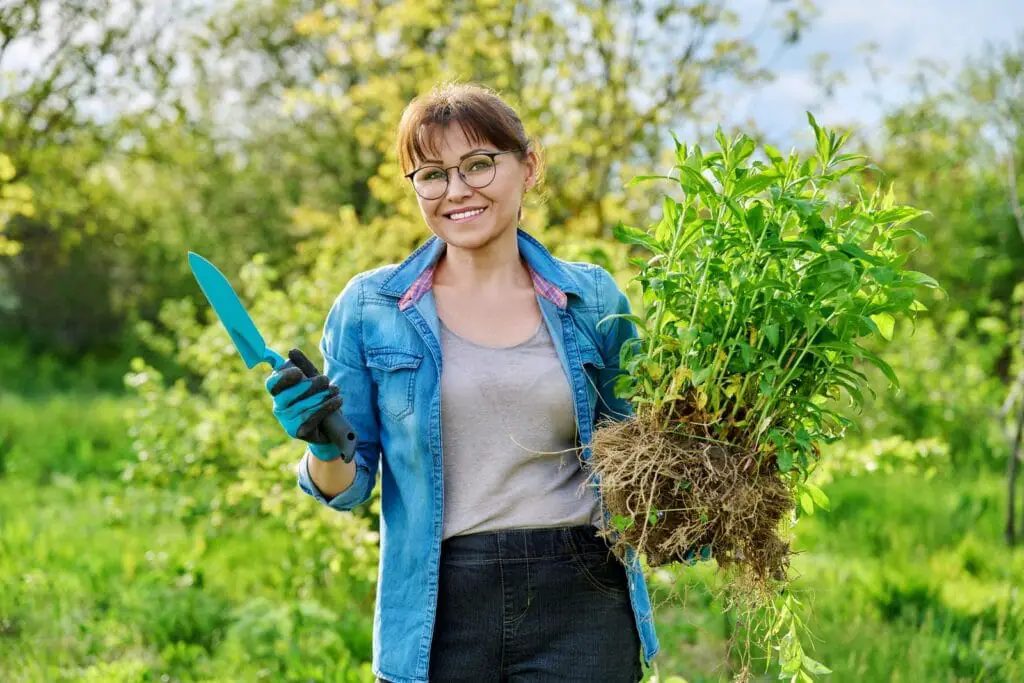
How To Plant Moringa Seed Pods Through Stem Cuttings
Take out the cuttings from actively growing Moringa Mother Plants. Cuttings should be 20-30 centimeters, while the diameter should be in excess of one centimeter. Stick this in some good potting soil, which can be a mixture of garden soil and composted manure.
Although Moringa has a short juvenile phase where it’s too young to produce flowers or seeds, expanding your garden through cuttings eliminates this waiting stage.
Sprouting Moringa trees using this method can also give you that healthy miracle tree you crave since it is genetically similar to the one you already have.
Don’t let the manure scare you off, adding compost and manure makes the soil nutrient-rich. Keep the pot moist until the cuttings are rooted, and don’t forget to create planting holes at the bottom to drain excess water.
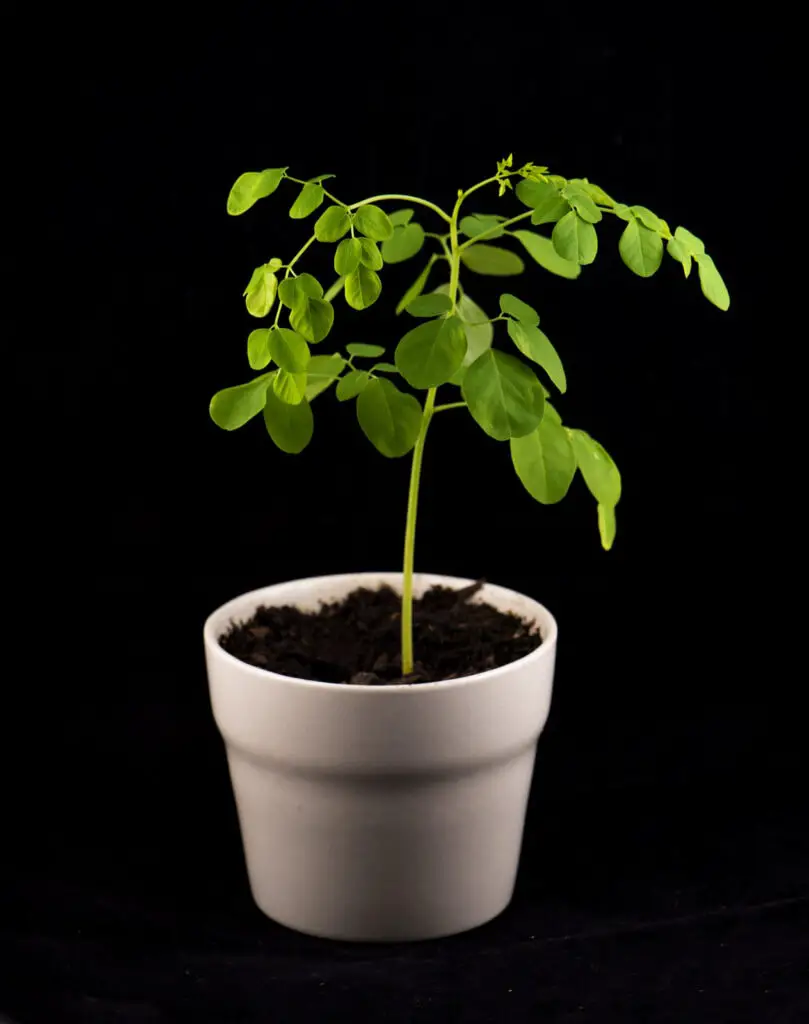
Your fast-growing tree can emerge from a pot, in the field, or in a container. However, containers are preferable as you will need conditions to almost be perfect for this to work with stem cuttings.
We will admit, stem cuttings are a little tougher than planting from the seeds, and seem to take longer to grow the Moringa tree than from the seeds. You may add 20% vermiculite sand to your soil mixture for improved drainage, as leaving water in the container will only result in soggy soil.
This doesn’t support healthy Moringa Stemming. Using nutrient-rich soil with lots of sunlight is how to get these to fresh leaves as fast as possible. You may start to see fresh leaves within four weeks of adequate watering and sunlight.
Where Do Moringa Trees Grow Best?
Moringa trees and clay-like soil are lifelong enemies. Instead, moringa plants grow best in dry soil, which should be light and sandy as they support the growth of young seedlings throughout the year. Moringa trees also prefer tropical climates but can be grown in colder places.
As deciduous trees, Moringa trees lose their leaves as the season changes.
They can survive light frost as they are incredibly resilient plants, but we prefer to bring ours inside during the coldest parts of the winter months.
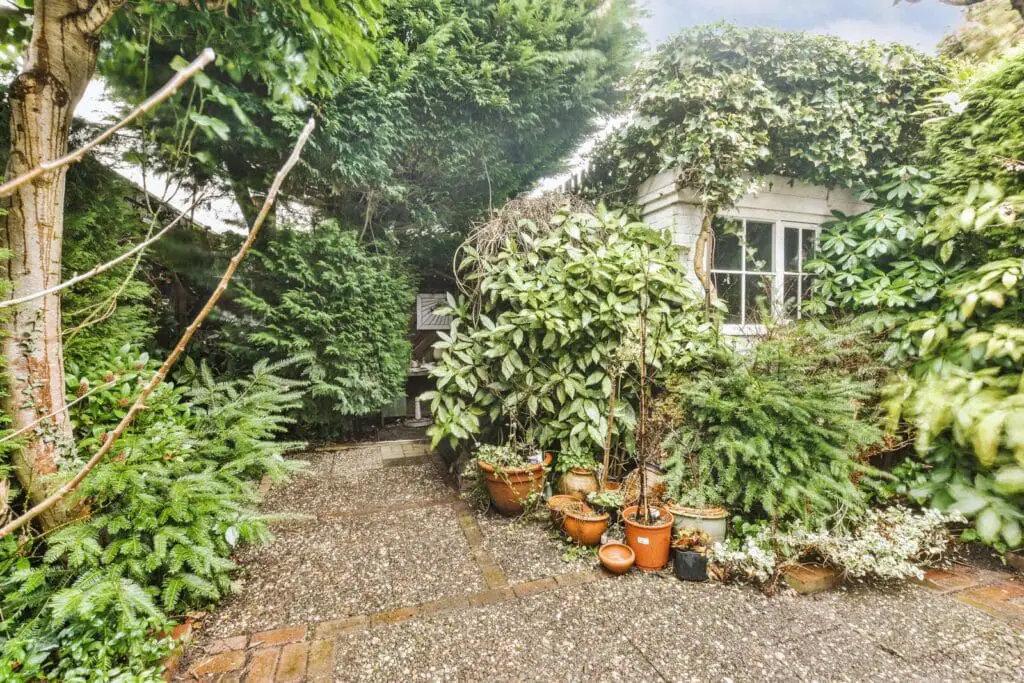
Should You Soak Moringa Seeds Before Planting?
You should soak your Moringa seeds before planting. Soak the Moringa seeds for two hours, transfer them to a paper towel, moisten the paper towel and leave this in a ziplock bag for two to three days. This is just long enough for the seeds to germinate.
This is known as the paper towel method, and it can produce a healthy young sapling when done right. You can also use an airtight container and leave it in a warm area.
After it sprouts, transfer the seed to a potting soil container with draining holes. Water properly and expect some emerging saplings within two weeks.
When is The Best Time To Transplant A Moringa Seedling?
The best time to transplant the seedlings to a planting hole is during the evening, giving the young plant about 14 hours to recover from transplant shock before being exposed to the sun.
It’s also a great way to protect saplings from dying out after a transplant. Dig holes of about 3 feet and pack soil around the happy seedling to ensure it stays firm and safe!
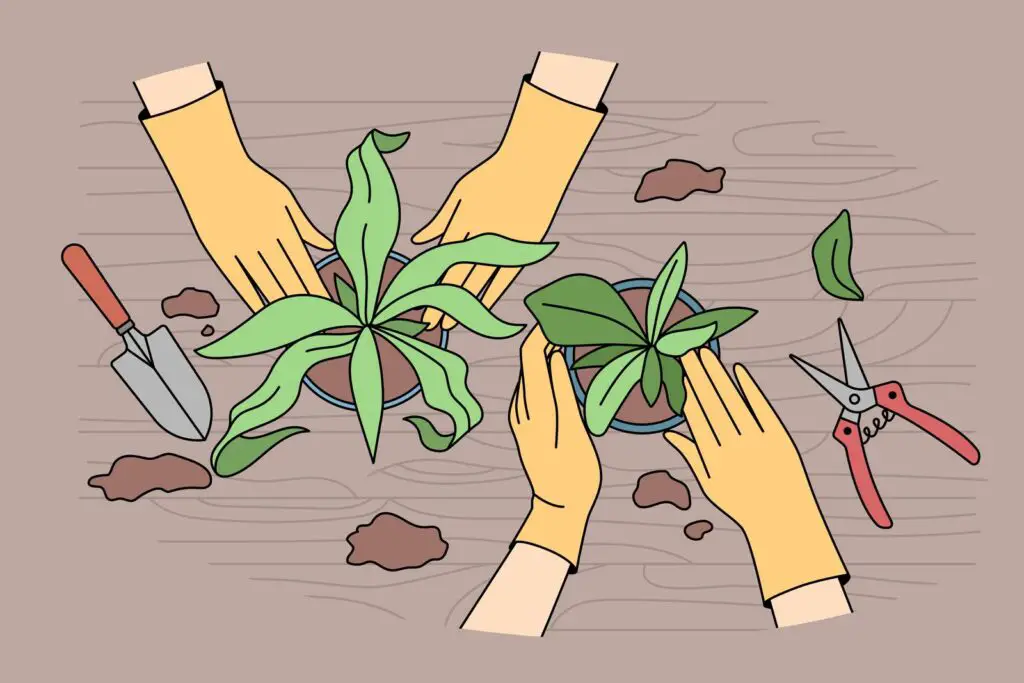
Can You Grow Moringa Seeds In Cold Climates?
Moringa trees adapt quickly to various weather conditions, and you can still get healthy young saplings in a cold climate. Moringa does not prefer this type of weather and will grow better in drier seasons. There are some tricks you can do to get your Moringa Tree to grow healthy during these times.
While we would love to go over all of them here, we give more information in our article on “Can you grow Moringa in cold climates.”
Can You Eat Moringa Seed Pods Raw?
Moringa fruit pods can be eaten raw, like string beans. However, you would have to ensure that the pods haven’t been infested by fruit flies, which can live in these pods until you start harvesting Moringa.
You can add raw pods to soups and sauces, but it’s always a great idea to cook them instead.
When roasted, they become a handy snack, and when cooked while still young, they are similar to peas with an earthy nutty taste. (Read More From This Research Paper)
Are There Side Effects Of Moringa Seeds?
While Moringa seed has been proven as healthy for consumption, eating them in large doses frequently can produce unpleasant side effects. These include allergic reactions, constipation, and extremely low blood sugar levels. For some, these seeds even act as a laxative.
Moringa seeds have a mountain of health benefits, and the seeds are commonly present in many extracts for medicinal purposes (Source)
The best way to prevent side effects is to not consume the seeds regularly and to be very careful with the amount you are eating. Daily consumption of the Moringa seeds is not advised. You (as always) should consult with your doctor about this herb’s best practices.

Can Moringa Seeds Be Used for Water Treatment?
Moringa seeds can be utilized for water treatment. These seeds, when crushed into powder can clean up even some of the dirtiest water. Once the seed and sediments settle at the bottom of the water, the seeds will carry more than 90% of the viruses and bacteria in the water.
While the way it works is pretty complicated, the cleaning process is possible through the different electrical charges. At the molecule level, these pulverized seeds attract harmful and dangerous particles to them.
Eventually, once they’ve latched together, the combo falls to the bottom of the reservoir, out of your water!
If you’re ever out alone in the wilderness, this can be used as a potent antiseptic for treating drinking water and making it safe for human consumption.
Should You Soak Moringa Seeds Before Planting?
To have the highest chance of growing a Moringa tree, soak the seed pods in water for 24 hours to remove the external white covering. This will kick start the growing process. Remember, Moringa seeds love moist environments, making soaking necessary for your seeds.
Conclusion
Going on the journey of planting and growing Moringa trees reveals key insights, from optimal harvesting times to cultivation methods and the benefits of consuming Moringa seeds. Whether planting directly or through stem cuttings, the emphasis on well-drained soil, temperature, and sunlight is important for successful growth. The Moringa tree’s resilience in various climates, coupled with its health benefits, makes it a fascinating addition to any garden. As you explore the details of nurturing this “miracle tree,” remember to soak seeds, transplant wisely, and appreciate its diverse uses and health benefits it will bring to you, from delicious food recipes to water purification. Happy gardening!

For years now, Moringa has been a daily consumption in my life, incorporated in various forms such as capsules, food recipes, and soothing teas. Initially, my daughter and I embarked on this journey as an experiment, but as time went on, I delved deeper into its remarkable potential and unearthed the unlimited benefits it offers for our well-being and health. I got motivated by how much it positively impacted me and decided to share my insights about Moringa’s profound impact on health and overall living through my blog posts.
